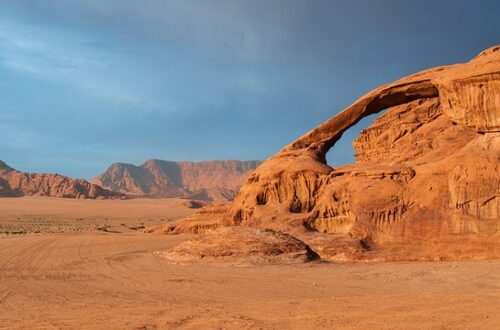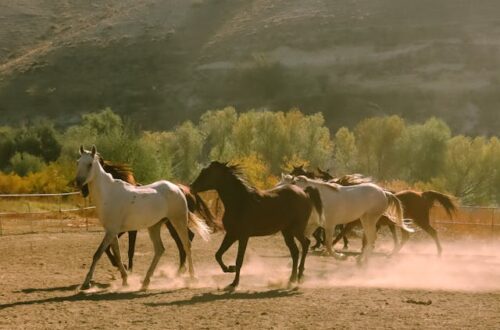
Parts of a Horse
This article is intended as a starting reference for the names of the areas and parts of a horse. It includes the names of basic markings on the face and legs. While it should be sufficient for everyday purposes, greater detail can be sought in a reference text such as Rick Parker’s Equine Science.
Points of a Horse
The different parts of a horse are often referred to as points. It is good to be familiar with them:
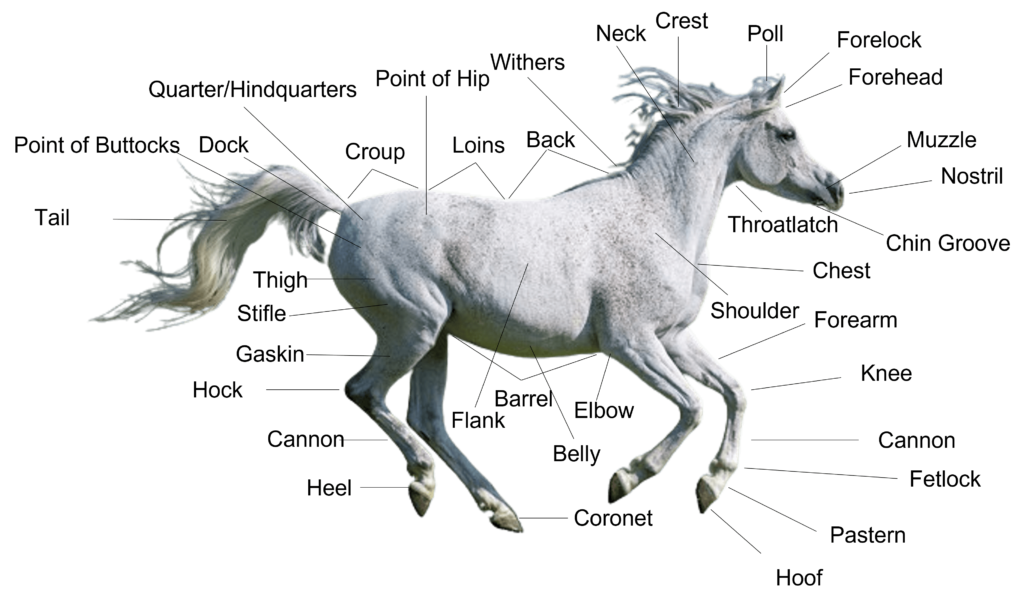
A horse’s height is measured in a direct line from the ground to top of the withers, which is the ridge between the shoulder blades. The height is usually given in hands (one hand being 10cm or 4 inches), and a hand is divided into 4 inches (e.g. 15.2 hands = 15 hands and 2 inches).
The left side of the horse is referred to as the ‘nearside’ while the right side is referred to as the ‘offside.’ It is usual practice to tack, lead, and mount the horse from the near side — though it is actually better to regularly mount from both sides so as to keep the strain of this activity even over the long term.
Traditionally, riders passed each other offside to offside, meaning they would effectively ride on the left side of a road or path when passing each other. There is an interesting story here about Napoleon and the countries that drive on the left versus those that do so on the right, but to tell it properly would require a separate article. Perhaps one for the future.
Coat Colour and Points
The phrase ‘points of a horse’ is used in general to describe the terms that identify the different parts of a horse. It shouldn’t be confused with ‘points’ when talking about a horse’s coat colour.
The points when mentioned in the context of a horse’s colour, refer specifically to the mane, rim of the ears, tail, and lower part of the legs. For example, a bay horse has a brown body with black points. The mane, tail, rim of ears, and lower limbs are black while the rest is brown.
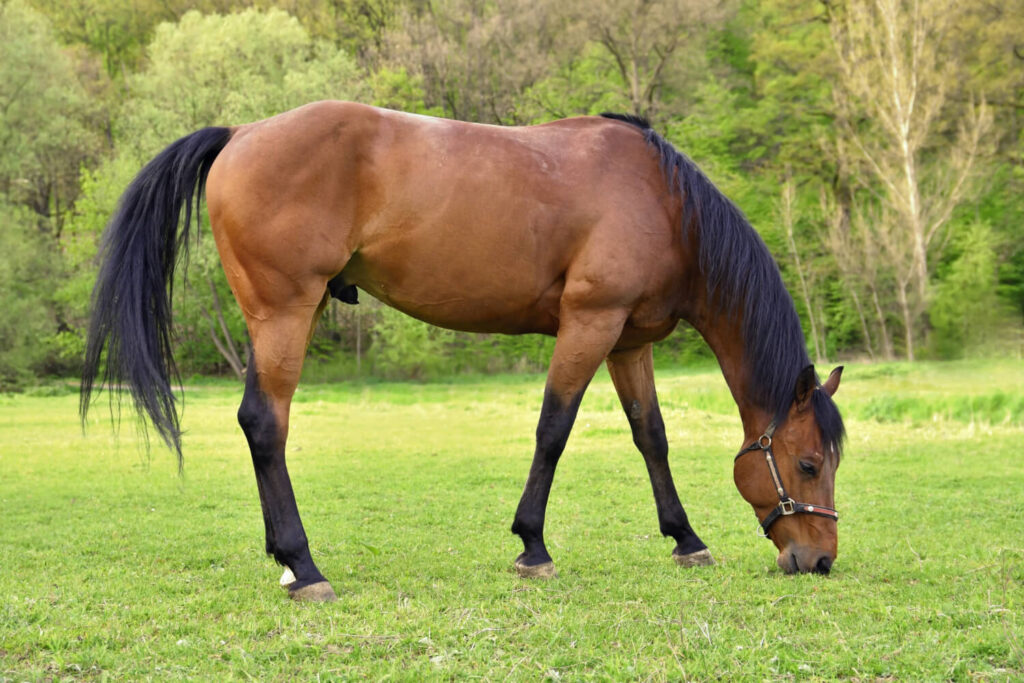
The colours of a horse will be covered in greater detail in an upcoming article.
The Hoof
The hoof of a horse is made up of the wall, the frog, the heel, and the sole.
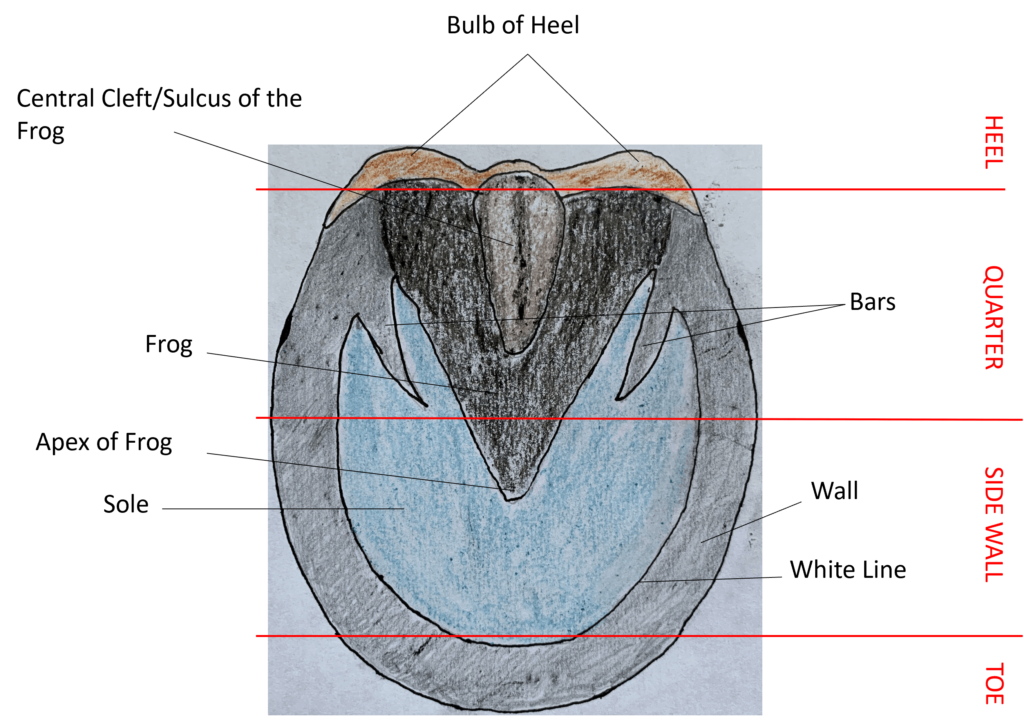
The wall covers the front and sides. It is composed of a strong horn like material, and is thickest at the front part called the toe. It grows, on average, at a rate of 1 cm (0.4 inch) a month and needs to be periodically trimmed.
The frog is a non-sensitive wedge shaped cushion towards the back of the hoof. It forms a part of the underneath of the hoof. It helps absorb shock and is the first part that makes contact with the ground in any stride. Interestingly it is also a scent gland, and it is thought the scent trail it leaves behind might help horses track other members of their herd.
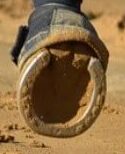
As mentioned, the wall does not go all the way around, but rather turns in at the heel towards the back, and runs alongside part of the frog. The parts of the wall that turn in at the heel are called the bars.
The sole is the part underneath that is contained by the wall and bars, and is somewhat concave, meaning that it does not really make proper contact with the ground. It is the wall, the bars, and the frog that are the parts of the hoof that make contact with the ground and that bear the weight of the horse.
Face Markings
Markings on the face are referred to by different names, depending on the amount of white and its location.
A star is a a small white marking on the forehead, while a snip is a marking between the nostrils.
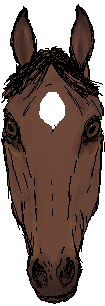
Star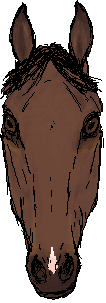
A stripe is a narrow line down the middle of the face. A blaze, on the other hand, is a much wider line down the middle.
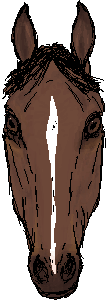
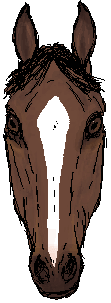
Leg Markings
The names for the leg markings also depend on the amount of white and its location on the leg.
A coronet is some whiteness just above the wall of the hoof, while a pastern is whiteness that extends beyond that but stops before reaching the fetlock joint. A heel is some whiteness above the heel of the hoof.
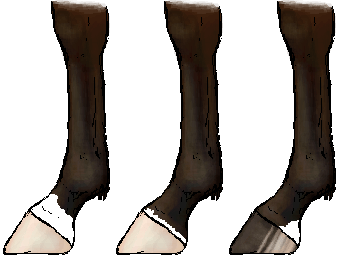
A fetlock covers the fetlock joint, while a sock extends above the fetlock, but stops well before the knee or hock joint. A stocking extends up to or beyond the knee or hock joint.
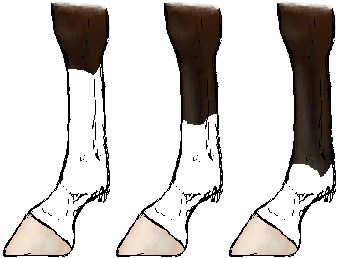
Left to Right: Stocking, Sock, Fetlock


